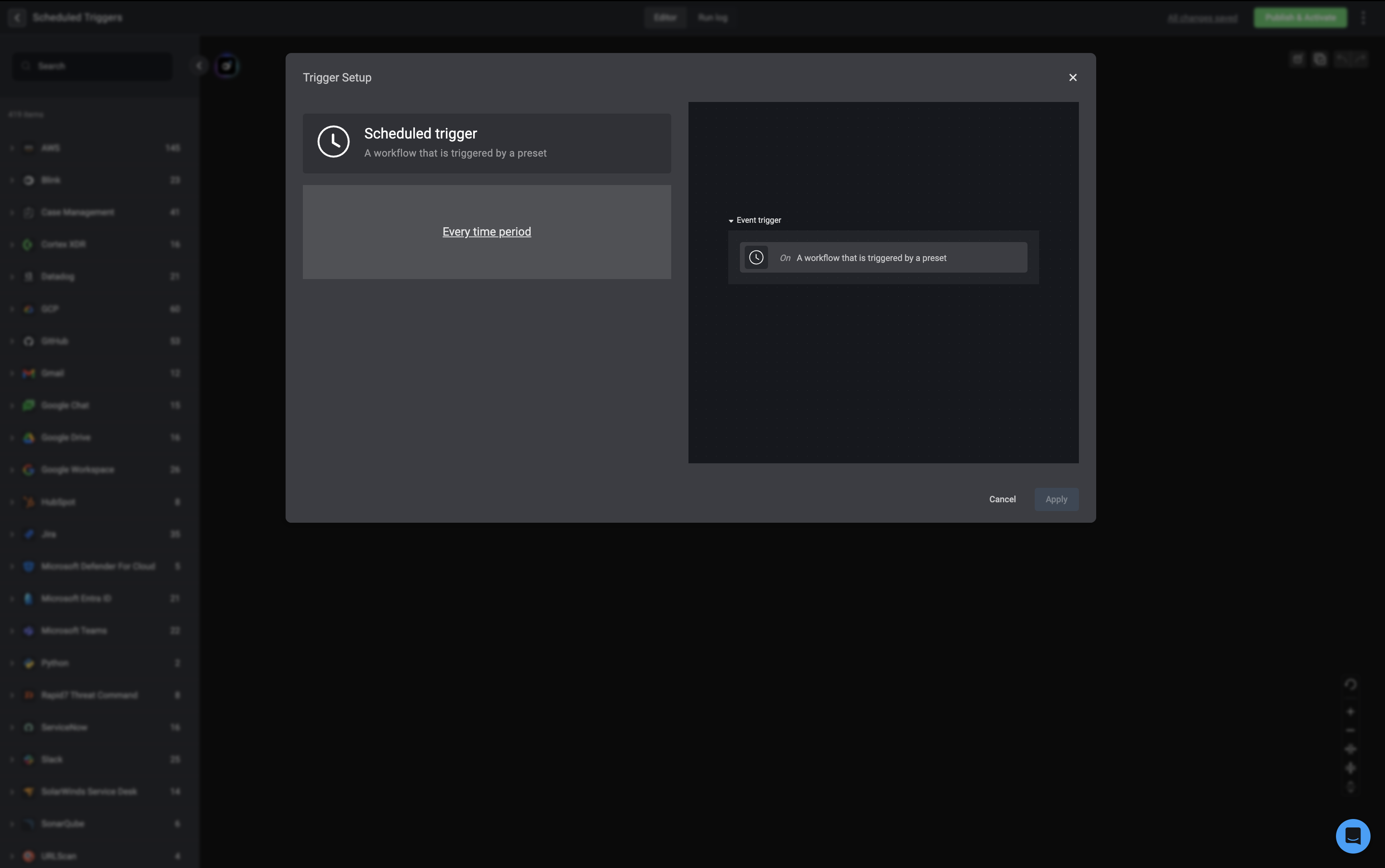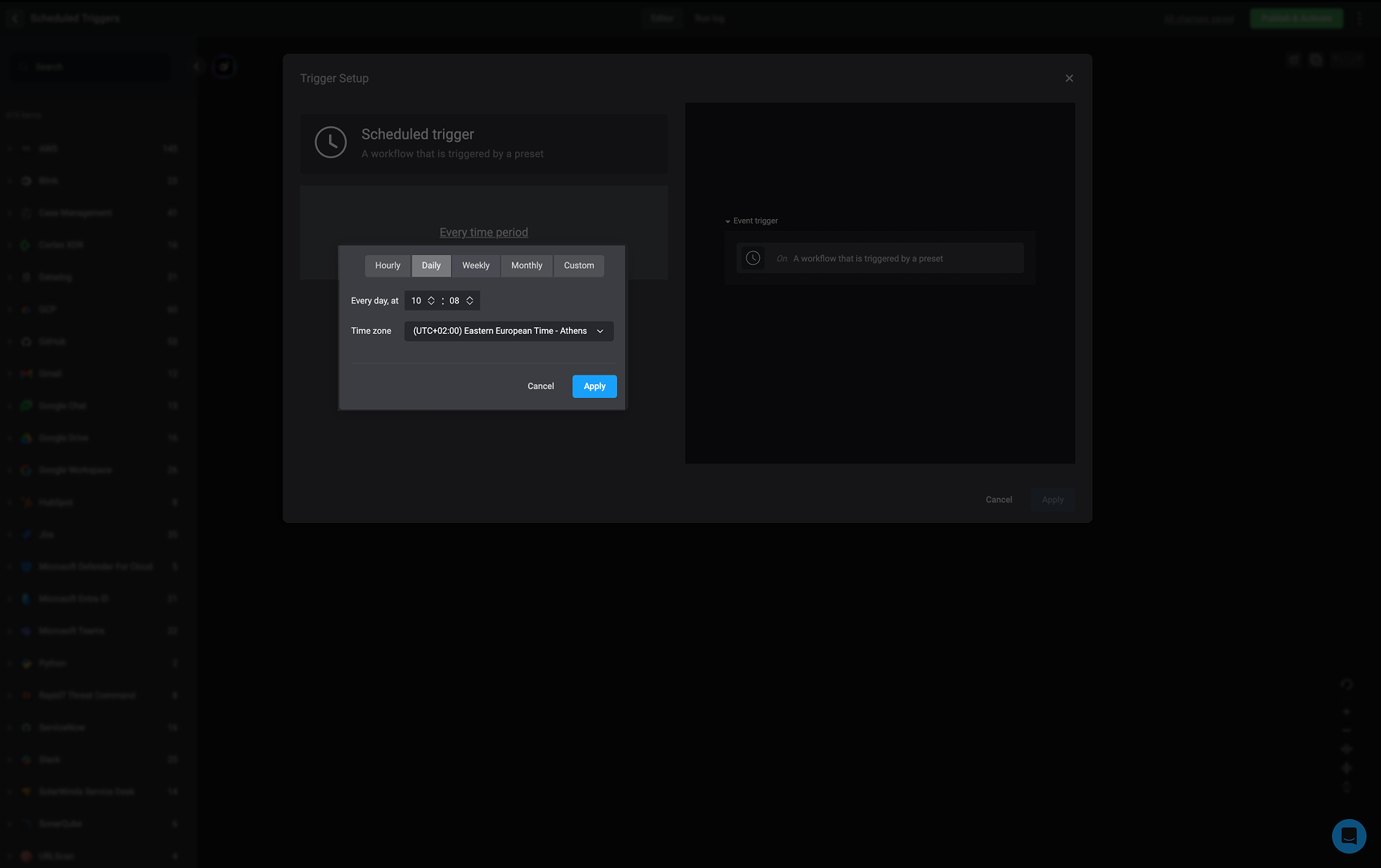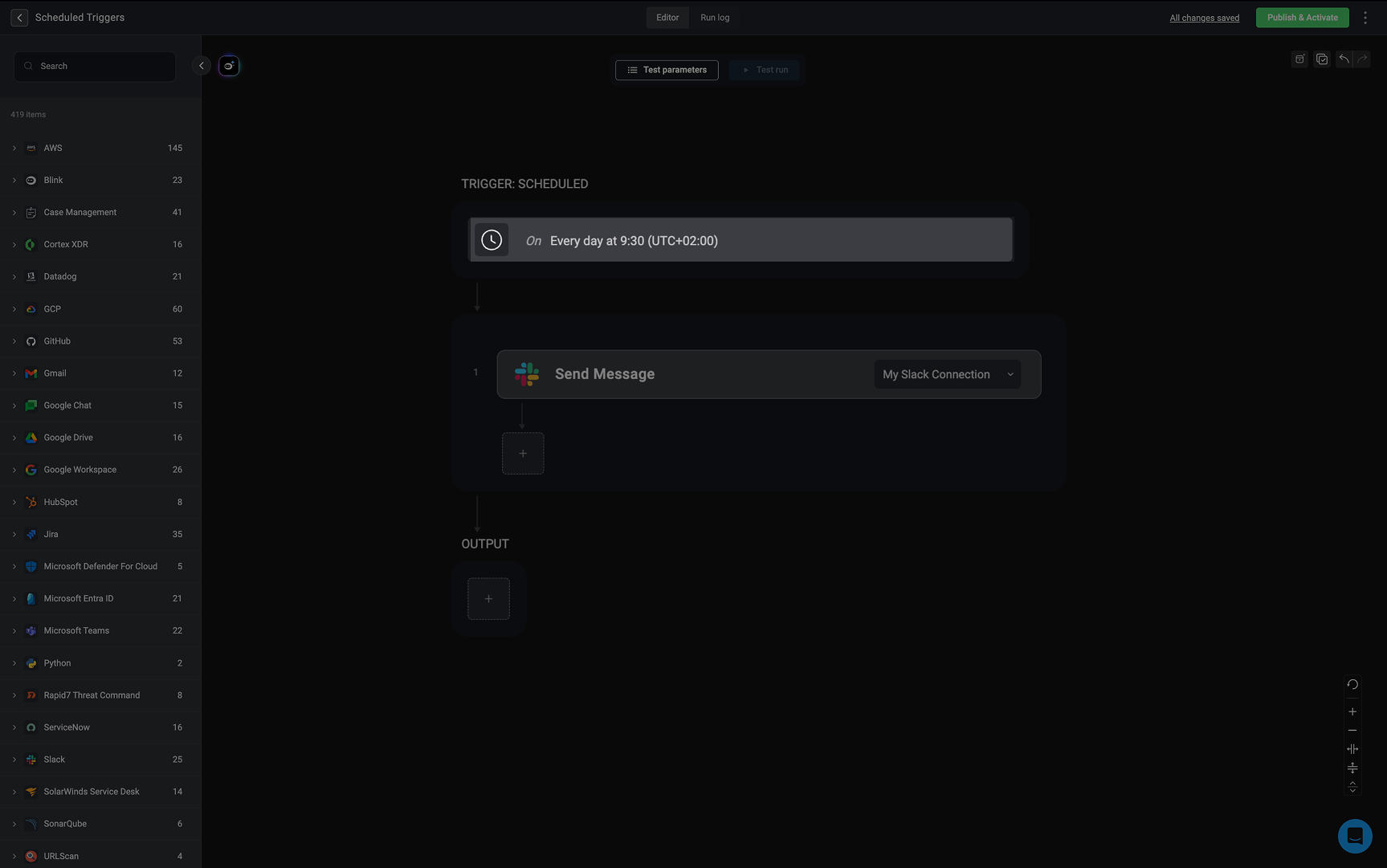How this Helps
By selecting a scheduled trigger, users ensure that workflows execute automatically at the desired frequency without requiring manual intervention.
Need help finding the right trigger type for your use case? See About Triggers.
| Scheduling Method | Description |
|---|---|
| Fixed Intervals | Run workflows hourly, daily, weekly, or at custom time frames. |
| Cron Expressions | Specify complex scheduling patterns using standard cron syntax. |
How Scheduled Triggers Work
Scheduled triggers allow workflows to start automatically at predefined times or intervals, executing based on a fixed schedule. Scheduled triggers are ideal for routine automation tasks. For example, IT admins can use scheduled triggers to automate daily system health checks, ensuring potential issues are identified and addressed promptly—without requiring manual intervention. The following diagram illustrates how these triggers work:1
A Scheduled Time Arrives
The trigger activates at the predefined time or interval, such as daily at 8 AM or every 15 minutes.
2
Trigger Conditions are Evaluated
If conditions are configured, Blink evaluates whether the conditions are met.
3
Trigger Fires & Passes Data
If the conditions are met, the trigger activates and passes relevant execution details, such as timestamps and scheduling metadata.
4
Workflow Executes
The associated workflow starts and runs the predefined automation tasks.
Configuring a Scheduled Trigger
1
Start a New Scheduled Workflow
Create a new workflow and choose the Scheduled trigger. You will be directed to the workflow editor.
2
Open the Schedule Settings
In the Trigger section, click Click to schedule a run. This opens the trigger configuration settings. Select “Every time period”

3
Set the Workflow Schedule
Define how often your workflow should run, and select the appropriate time zone for the schedule.
You can choose from:

- Hourly
- Daily
- Weekly
- Monthly
- Custom (advanced option using a Cron expression)
| Symbol | Description |
|---|---|
| * | any value |
| , | value list separator |
| - | range of values |
| / | step values |
Important Scheduling Notes:
- Default Interval: Workflows run every 5 minutes by default.
- Minimum Interval: The shortest allowed schedule is every 1 minute.
- Performance Consideration: Running workflows too frequently (e.g., every minute) can create unnecessary system load. Optimize these workflows for efficiency.
- Validation: If the Cron expression is invalid, it will be highlighted in red.

4
Apply and Confirm the Schedule
Click Apply to save your scheduled time
